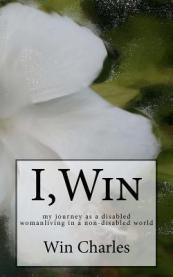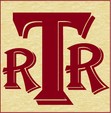T.R. Robinson's Blog, page 35
November 9, 2016
Win Kelly Charles – Interview
Welcome Win Kelly Charles
Author of:
I Win, an autobiographical/biographical book and
Several other books.
Please tell us a little about yourself.
My name is Win and I have a physical disability of Cerebral Palsy.
What first inspired you to write?
My life.
In what genre(s) do you prefer to write?
Biography was book number one. Since then children’s books and young adult novels which are all about disabilities have been my main focus.
Do you consider your books convey messages to readers?
Yes: messages of hope about disabilities.
What advice would you give to authors who are just starting out?
Find an excellent editor who is not a friend.
How do you go about marketing your books?
Facebook, podcasts, Twitter and just simply telling people to go to Amazon.
How important do you think review are?
Extremely important but don’t take a bad one to heart.
This is an age old question but one I consider of interest. If you were stranded on a desert island, which three books would you like to have with you?
Something that taught me about the gift of humanity.
For example: Sexy Boss – How Female Entrepreneurs Are Changing the Rule Book for Money, Success and Even Sex, and How You Can Too!
Please share with us links to where readers may obtain further information and more insight into who you are.
Amazon Author Page:
http://www.amazon.co.uk/Win-Kelly-Charles/e/B009VNJEKE/ref=dp_byline_cont_book_1
Facebook: https://www.facebook.com/authorwc
Twitter: https://twitter.com/WinKellyCharles
Podcasts (x 2):
Butterfly Wisdom (educational – relating to disabilities):
https://itunes.apple.com/us/podcast/butterfly-wisdom-on-wheels/id1097347182
Win’s Women of Wisdom (conversations with those who are making a difference):
Thank you Win for sharing with us.
You may find all Win’s books listed on her Amazon Author page:
http://www.amazon.co.uk/Win-Kelly-Charles/e/B009VNJEKE/ref=dp_byline_cont_book_1
I read this book some time ago.
If interested, you may read my review here.
Please Note: there are additional, different, covers for this book depending upon where you are looking.


November 6, 2016
What makes a book a classic?
Some imply classics are only classics because we are told they are. (Not a verbatim quote).  Rather a bold and, to my thinking, unjustified statement.
Rather a bold and, to my thinking, unjustified statement.
What is a classic?
A few dictionary definitions:
‘serving as a standard or model of its kind.’
‘of lasting interest or significance because of excellence.’
‘a creation or work considered as definitive.’
‘those works of fiction regarded as great or lasting.’
Quotes:
The name of the person making the statement is included where known.
‘Something of timeless worth or with a timeless quality.’
‘Something old that is still popular.’
‘Book accepted as being exemplary or noteworthy.’
‘Moral truth; eternal passion of the heart.’ i.e. the book contains such.
‘Ancient works are classical not because they are old, but because they are powerful, fresh and healthy.’ – Charles Augustin Sainte-Beuve in his book Le Constitutional 21 October 1850
‘It is a classic because of a certain eternal and irrepressible freshness.’ – Ezra Pound
‘A book everyone is assumed to have read and often thinks they have read themselves.’ – Alan Bennett
Despite what has been said above, it must be accepted that sometimes peer pressure forces people to regard, or at least identify, some books as ‘classic’. Whether acknowledged or not, most seek acceptance by their peers and wish to avoid looking ignorant or foolish.
What do readers like about the classics?
First a fundamental question: Why do we read? Usually for one or more of the following:
To pass the time.
To learn.
Inquisitive about people’s lives.
To understand social customs and acceptances.
To learn how society has changed.
An interest in history.
Enjoy a good story.
Just a few examples.
This post primarily concentrates on novels and short stories though, some scientific, educational, biographical, gardening, self-help, etc. books may be considered ‘classics’ in their own right.
So, what do reader’s like about classics?
Besides the fact most comprise great, well written, intriguing stories many also contain observations upon, and details of, social behaviour and attitudes. Some also incorporate historical observations and accounts.
Here is a list of some of the better known ‘classical’ authors and thoughts upon what people find interesting in their books. The list is in no order of preference nor is it intended to be detailed.
George Elliott: Her writing is dominated by observances of her own times (1800s) including social behaviour and acceptances.
James Joyce: Observations on life in Ireland (early 1900s).
Tomas Hardy: Tales are based in his native Dorset with many fictional locations formulated upon actual places. In addition, some portions of the stories originate in actual occurrences.
Charles Dickens: Besides writing a good tale he also, determinedly, utilized his books to show up the hypocrisy, poverty, institutional inadequacies etc. of his times (1800s).
Jane Austen: An excellent observer of society, particularly higher society. She uses her excellent command of satire to expose the foolishness and unfairness of much of it.
We should also, not forget the eternal condition of humanity; though society may change from decade to decade, people remain fundamentally the same. Some readers enjoy seeing how a character deals with a given situation and how that may be applied to modern life. They should however, not to forget to take into account changes in social acceptances and tolerances.
What do modern readers NOT like about classics?
The following has been gleaned from a variety of comments and observations, primarily in social media discussions and publisher orientated articles.
Impatience: Many appear to just want fast paced, easy read, action filled adventures.
Do not enjoy detailed explanations.
Unable to engage imaginations effectively or at least to the same degree as predecessors. (Possibly the result of living in a very visually orientated society.)
Have no interest in past society or history.
Reduced concentration spans.
Again this is not intended to be an exhaustive list but just some examples of what may impact upon a reader’s enjoyment or lack of enjoyment in a book. Naturally, it would be wrong to unconditionally generalise though many more readers do now appear to encompass the above ‘traits’.
One report stated well over fifty percent of classics downloaded onto e-reading devises are never finished with the reader usually giving up at an early stage.
Who decides a book is a classic?
University reading lists and school curriculum list books considered as required reading. Of course that does not necessarily mean each and everyone is deemed a classic, although most are. However, are we to infer this means students and readers automatically accept those books to be so? Surely individual intelligence and freedom of choice must come into it. Reading after all is a very subjective experience. We are each unique. It is for the individual to make the final decision. That said, there are, as indicated by the definitions and quotes above, certain books the majority consider to be ‘classic’.
Can a modern book be considered a classic?
One feature generally accepted is anything defined as ‘classic’ has endured over time. With books there is also the quality of an engaging story with good plot. Other prevalent elements are social and historic observations. That does not mean a book has to have been published a hundred or more years ago before it may be considered a classic. A prime example; ‘To Kill a Mockingbird’ by Harper Lee, published in 1960. Despite its ‘youthfulness’ this has been widely identified as a classic for many years.
The word ‘classic’ may of course also be used in its more urban understanding; meaning something considered great or entertaining by an individual. Consequently, a relatively modern book may be identified as a ‘classic’ e.g. Harper Lee’s book mentioned above. As previously stated, reading is very much a subjective experience and we are each unique with differing tastes and likes; what may appeal to one person may not appeal to another. However, to be considered a true classic I think a book must have withstood the test of time and continue, as some have said, to have a freshness and relevance about it.
Despite all of the above authors should not be discouraged. The book they are writing now may well be considered a classic in the future, especially if it contains the qualities of endurance, freshness and relevance to the human condition no matter the era.


November 1, 2016
Church of Tango by Cherrie Magnus
This is a very personal, honest, unashamed, sincere memoir. Essentially it is a story of survival and overcoming; loss of loved ones; despondency; disappointing friends; serious illness; thwarted love, broken dreams etc. It is a very human tale.
The author s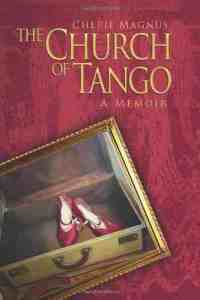 truggles with her despondent emotions, following the untimely death of her husband, but then unexpectedly finds new energy and hope within herself. This sets her off on a global journey that has an unforeseen destination.
truggles with her despondent emotions, following the untimely death of her husband, but then unexpectedly finds new energy and hope within herself. This sets her off on a global journey that has an unforeseen destination.
The tale unfolds by moving back and forth in time rather than following a strict chronological order of events. A style the author uses to good effect to build for us an understanding and an image of who she is and what has made her so.
Her travels to a variety of different countries and cultures are never without incident and frequently involve disappointment. Nevertheless, throughout Cherie Magnus displays a determination and resilience which have to be admired. I doubt there are many who would have put up with what she did and still, ultimately, come through smiling and with an undaunted zest for life.
The book unmistakably conveys her passion for dance and her determination to find it wherever she can. This sometimes leads her into districts most would not wish to traverse on a darkened night. However, despite the title, Tango does not occupy a large percentage of the book but in the end does turn out to encompass the fulfilment of so much of the author’s deepest longing.
Not wishing to spoil it for potential readers I will stop here. The synopsis clearly outlines the framework of the tale and for your assistance it has been reproduced at the end of this review.
The book contains many statements in French though these, in the majority of instances, are without interpretation. This may have been okay for classic novels most of which were written at a time when French was the salon as well as the political language of the day. However, in these modern days those who can read it are in an overall minority. Although the story is not unduly impaired it would have been nice to understand what was being said. The same problem, on a much reduced scale, is encountered where Mexican and South American terms are used again without interpretation or explanation.
It is evident, as you read, that the author is a sensual, sensitive person who has always loved life and enjoyed much with her husband. His absence brought her very low and threatened to be her end. However, her passion for life resurfaces and despite all the difficulties and obstacles wins through in the end; not only to her gratification but also to that of the reader.
At the end of the book the reader is left with the sense of ‘more to follow’ and indeed the author has subsequently published her second book: ‘Arabesque’.
This is an interesting read though it has to be admitted non-dancers may become distracted in places. However, as already stated, dance plays but a small part in the narrative.
It is a well written memoir within which the author’s emotions of the moment are conveyed in such a clear manner that the reader cannot help but identify and empathise with them. I allocate four stars (4*).
Synopsis:
‘This is not a “tango book,” but a story of survival that cuts across death, cancer, Alzheimer’s, loss of home and homeland and cherished heirlooms and possessions, loss of shared histories, of hope for one’s children, of hope for the future, of love. But it’s also about finding love and unexpected joy. And about listening to the music and dancing.
I started writing this story at the time it began–in February of 1992, when I was so depressed after my husband’s death I wanted to swallow all of his left-over meds and follow him into the beyond. So what began in a way as a journal or diary became the chronicle of my road to survival in four countries. And once I made that decision to live no matter what tragedy came my way, I plugged on, through one tremendous loss after another, by dancing. No, not yet had the tango found me, but whatever dance there was at the time came to my rescue. I had always been a dancer, and now I knew dance could save me from despair.
As my adventures unfolded, the manuscript grew and grew. I had to make cuts in events, characters, reflections and realizations. That was the hardest part of bringing this story to fruition. There is so much left out. Who knows, maybe I’ll write The Daughter of the Church of Tango, or a prequel one day.
Our tango students come from all over the world: China, The Philippines, Australia, Viet Nam, New Zealand, Hawaii, South Africa, India, Nepal, Finland, Russia, Israel, Scandinavia, all over Europe, Chile, Brazil, Colombia, Ecuador, Mexico, Canada and the U.S. And one question they all ask me is, how did I end up teaching tango in Argentina?
This book is my answer.
The Church of Tango is a passionate memoir of tragedy and adventure, lust and music, romance and tango-and above all, survival.’
The book is available both in paperback and as an e-book.


October 30, 2016
Welcome to this New Website
This website, including the blog, replaces all previous blog sites utilized by T. R Robinson and Tanya Robinson.
As indicated in the heading above and on the ‘Home’ page, the primary purpose and intention is to assist readers and authors.
the heading above and on the ‘Home’ page, the primary purpose and intention is to assist readers and authors.
Information that
has been previously published elsewhere but is still relevant will be added alongside new topics, facts, ideas and suggestions. Please bear with me while the site is being updated.
If you would like to be kept up to date, please feel free to sign-up for e-mail notifications of new posts as and when they occur. Simply enter your e-mail address in the panel to the right. Please Note: You need not be concerned about receiving unwanted or spam mail as the sign-up process is NOT a per se e-mail capture facility. It simply provides for notification of posts.
I will do my utmost to reconnect with those I have previously followed or who have been following the previous blogs. If you would rather not wait, you may like to add your e-mail address in the panel on the right.
I look forward to sharing news, ideas, tips and so on, with you.
T. R. Robinson


October 29, 2016
His Eye Is on the Sparrow by Ann Pearlman
This memoir outlines the impact a white, Jewish girl’s engagement to a Negroid had not only upon their own lives but also upon those of their families.
I found the book interesting not only for the personal tale but also from a historic point of view. It is very eas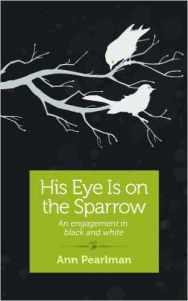 y, in these so called days of equality, to forget how life was for those in
y, in these so called days of equality, to forget how life was for those in
previous generations who dared break the social ‘rules’ and acceptances of the times.
It is made clear to us: How, violence was constantly on the edge. How, each family’s reaction was very different. How, the girl’s father tried to bring an end to the relationship in a most unfair and dramatic manner. It would be hard to share more of the story without spoiling it for potential readers: I will therefore cease giving any further details.
We are taken through the tale in what I would refer to as a rapid fire style: a little how I imagine the burst(s) from a machine gun would be. This style is not particularly to my taste but then we are all unique and different. Reading after all is a subjective experience. Nevertheless, I admire the fact that within this short sharp narration Ann Pearlman has successfully included all the relevant facts. She has also, again successfully, provided sufficient for us to understand the backgrounds and attitudes of the people and societies involved.
As said I would like to say more but do not consider it would be fair to potential readers to do so. It is a short book of only forty pages in print format. The account given in this memoir is interesting and provides insight into sixties American attitudes. It is also in many ways shocking and sad.
I give this book a three stars (3*) rating: As anyone who has followed my writings and reviews will know, I believe the majority of books fall within this rating. The lesser ones (1 & 2) being reserved for the not so good and the higher (4 & 5) for those that show excellence.
Available as an e-book and an audiobook.


Getting Self-Published books into Bookstores
Any self-published author who has tried will affirm how difficult it is to get a self-published book into a bricks a nd mortar book store. Why? The following is a conglomeration of information, ideas and thoughts obtained from a variety of sites and places.
nd mortar book store. Why? The following is a conglomeration of information, ideas and thoughts obtained from a variety of sites and places.
First, some of the concerns and problems surrounding this topic will be considered. Then ideas and thoughts on how self-publishing authors might be able to overcome these will be looked at.
Concerns/Problems
Costs:
Due to the costs involved, bookstores and retailers in general prefer not to deal with individual self-published authors. The same applies to libraries though this may be changing to some degree; some self-publishing sites e,g, Smashwords, now enable books to be added to library ordering lists.
What are these costs?
When ordering through a major supplier a bookstore only has to deal with a few invoices, whereas dealing with individual authors would mean thousands of separate ones.
Correspondence, including invoicing, with individuals would incur substantial amounts of stationary and paperwork.
Organising the payment of bills one at a time as opposed to handling bulk orders.
Print-On-Demand (most self-publishers use this method) is more expensive than offset printing (used for traditionally printed books). Some suggest this is not the case but generally most consider it to be so.
Major suppliers have a returnable policy for traditionally published books whereas most self-published authors do not. Or, if they do, it can be complex.
When a bookstore orders from a major supplier they are usually offered a 35-40% sometimes 45-55% discount. Self-publishing suppliers, including companies like Amazon only offer 25% or less. Bookstores consequently consider the profit margin too small to make the proposition viable.
This might be a debatable point: Some stores state the retail price for a self-published book sometimes exceeds that for a similar traditionally published one. At first glance this may appear to be an erroneous statement. However, though e-books generally attract a low price tag, print-on-demand editions usually carry a higher one; the supplier e.g. Amazon, Ingram Spark, etc. has to cover paper, ink, labour and postal costs.
Small booksellers have limited funds available and therefore cannot afford to pay out for a book if they are unsure it has sell potential.
Quality:
The question of quality frequently comes up when self-published books are under discussion. Some, very unfairly, state all self-published books are rubbish. Of course this is not true. Admittedly there are probably a higher percentage where the quality is not as good as it might be but to generalise, as with anything, is inaccurate and inappropriate. Nevertheless, the following aspects are often referred to:
Editing: Virtually every writing advisory site or individual emphasises the need for good editing. Of course this makes sense and every book, article, post etc. should have benefited from such. Authors are generally advised to employ a professional, external to them, editor and a proof-reader. This does however, raise difficulties for some. A large percentage of independent (indie) authors do not have the resources. Even if they do there can be other difficulties. For example: There have been accounts where an editor has requested a complete rewrite that omits much the author considers relevant and intrinsic to the book. In one case the author refused to comply and published without the editors input. Their book became a top bestseller and sold thousands. In another instance the editor changed five times with each having a different viewpoint. Despite these examples the advice stands; most books would benefit from professional editing. Nevertheless, how to afford one is another matter; there is a lot of work involved in editing which is reflected in the substantial fees payable.
Cover Design: Many readers state, unless the cover catches their eye they will not consider a book: they will not even bother reading the synopsis. In reflection of this attitude, one small independent book retailer declared, if they did not consider a book cover attractive enough to cause customers to pick it of the shelf, they would not stock it. Whatever your opinion of this it is clear authors need to take great care with their cover designs.
Internal layout: Some consider the layout of print-on-demand books to be inferior to that of traditionally printed ones. Even though it may be true in some instances it is an unjustified generalisation. Also, as has been observed by a few, there are ‘traditionally’ printed books, some by the large well known publishers, which contain errors and layout faults.
Other Bookstore Concerns:
Market demand: One store made the following observation. If an author approached them direct, they would have to like the book and be sure there was a market demand for it. They would also need to receive the standard (35%-40%; 45%-55%) discount and then only accept the books on a returnable basis. This would undoubtedly prove too expensive for some, if not most, authors.
Shelf Space: Small stores have limited space and therefore need to ensure they are using what they have to best advantage.
Reject consequences: If they accepted some books but rejected others, authors of the latter may take umbrage. A handful of authors denouncing a bookstore on Twitter, Facebook or any other social media could seriously damage a small business. As hard as it is to accept authors would behave in this manner, it has apparently occurred.
Business relations: Most bookstores prefer to deal with a publishing company/business rather than an individual. Probably because it is easier to sort any problem which may arise.
Are there any solutions?
For Bookstores and distributors:
Invoice/billing problems: It has been suggested someone should design a software programme that deals with multiple customer invoices as well as correspondence. Such a programme would cut costs considerably, especially if automated. Certainly sounds a viable option.
Relationships: Build relationships with local authors, author groups and reading groups. Will probably be surprised by what they find.
For Authors:
Collectives: One idea put forward is for authors to combine together to form a major collective. Bookstores/distributors would only have one business to deal with. This, among other things, would reduce their multiple billing problem.
Publishing Co: Another suggestion, to overcome bookstores’ reluctance to deal with individual authors, they, the author, set up their own publishing company. The suggestion was made by someone who has done this. They acknowledged it was odd to start with but it did work.
Rapport: Visit local bookstores taking time to build a relationship with them without pushing their books. Once a relationship exists may be able to ask if they would carry their book(s). Authors must ensure their books are of good quality; must offer a proper discounted rate; accept provision of books will be on a returnable basis. If the store accepts, the author should undertake the provision of, and cover the costs of, refreshments for any book signing or other public promotional activity.
Business incentive: Point out to local store(s), once a relationship exists, a substantial percentage of Amazon’s bestsellers were by self-published authors.
Conclusion:
For most indie authors getting books into bricks and mortar bookstores has seemed an impossibility. However, as seen, it is possible though difficult. A lot of work and time is required, primarily in building relationships. Some have succeeded with local bookstores who find the ability to advertise a book as being by a ‘local’ author an incentive. Nevertheless, it has to be acknowledged for most indie authors it is unlikely they will get their books into these stores.


In The Beginning by Abby L Vandiver
This in many ways is a tale of mystery within which we are taken on a virtual treasure hunt. Faith and belief and a fear of them being undermined are central to the story. Although biblically based (the protagonist is a Biblical Archaeologist) this is a work of fiction. Those who would naturally shy away from anything religious should think twice because this is more of an adventure story than a critique of faith or belief.
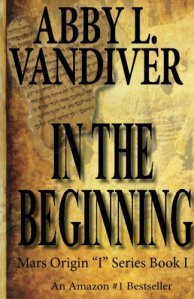 The plot and characters are well written. It is easy to visualise not only the people themselves but also the conversations they have. To quote an old saying, it is ‘like being a fly on the wall’. The plot unravels at a reasonable pace although there are occasions when it gets a little bogged down on detail. Nevertheless, this does not detract from the story too much and is obviously intended to set the background, roots and understandings from which the protagonist is working.
The plot and characters are well written. It is easy to visualise not only the people themselves but also the conversations they have. To quote an old saying, it is ‘like being a fly on the wall’. The plot unravels at a reasonable pace although there are occasions when it gets a little bogged down on detail. Nevertheless, this does not detract from the story too much and is obviously intended to set the background, roots and understandings from which the protagonist is working.
I found the idea behind the story intriguing and because I enjoy hearing about archaeological discoveries it caught my interest. It is a bit of a mystery tour which takes in a number of different global locations. We are not overburdened with descriptions of these, though there is probably enough for those who have visited the places to identify where the action occurs. For the rest of us, it means very little except when a well know district e.g. Gethsemane is mentioned.
The plot and ultimate conclusion are very plausible and, in my opinion, should not offend or challenge those with strong beliefs. If matters had occurred as suggested it does not diminish or negate traditional beliefs. If anything it gives them broader scope. I have intentionally avoided detailing the actual story so as not to deprive a potential reader of their enjoyment.
The protagonist’s character has been written with considerable understanding. It could almost be autobiographical or based upon someone the author knows or has known who suffers from such neurosis and paranoia. Nevertheless, for me there were occasions when there was a bit too much of it.
There are several small errors throughout the book, which imply the author has done their own proofreading. The relevant word or phrase may easily be determined but it tends to cause the reader to have to momentarily stop. An external proof-reader would have hopefully spotted most of these. I sympathise because I have also encountered the problem. Proof-reading your own work is difficult and an author may often find they are continually ‘blind’ to some errors.
I give this book a three (3*) stars rating. I liked the story but, despite how well it is written, could not say it was amazing or extra special for me.
The book is available in paperback and as an e-book.


October 28, 2016
I Win by Win Charles
This is one of the shortest reviews I have ever written but then it is one of the shortest books I have re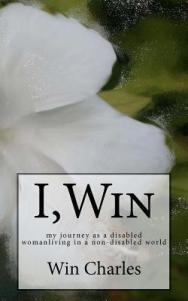 ad (51 pages). In addition, I do not wish to spoil the read for others by repeating relevant content, which with a short book could easily be done.
ad (51 pages). In addition, I do not wish to spoil the read for others by repeating relevant content, which with a short book could easily be done.
The author, who was born with cerebral palsy, was only twenty-four when she wrote this memoir. As she says her desire was to honour her mother for how she loved and helped her. However, this memoir encompasses far more. In many ways it is an amazing tale of how someone with such physical limitations has lived a full and active life. In fact, she, in the few years of life already experienced, has undertaken far more than many physically able people.
Throughout she is upbeat and positive and her exuberance for life is apparent. And she has the right to be proud (not arrogant) of her achievements. There is some repetition but this does not unduly detract.
Besides informing us, who did not know before, about the varying limitations of the illness and of the different types of cerebral palsy the author goes on to discuss how ‘able-bodied’ people tend to treat those with obvious physical disabilities. She wants us to learn and understand. I, having personally known people with a variety of different disabilities, may confirm she is very accurate in her observations. If we fail to comprehend, it us who will miss out on knowing and connecting with some unique individuals.
The book is written in a short, concise manner with the author’s voice readily apparent throughout.
This is an upbeat and inspiring memoir showing how something most of us would consider disastrous may be overcome. I happily allocate a four stars (4*) rating to this genuine memoir.
The book is available in paperback, as an e-book and as an audio book.
N.B. Depending on where you are looking the book has different covers.
The author also has her own art business: http://www.redbubble.com


Assessing Book Review Ratings
One thing we must always remember, whether we are a reader, an author or both, reading is primarily a subjective experience (excluding instruction, text and similar books of course). We are each unique, special and different and must always allow for that. After all we want our ideas and thoughts to be taken seriously and must grant the same consideration to others.
In this post I will be cons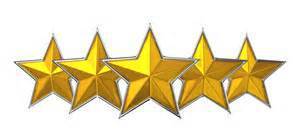 idering the existing ‘star’ based rating systems propounded by companies and organisations such as Amazon and Goodreads. My intention is twofold: 1) To provide some guidance for those unfamiliar with, or nervous of, the topic; most of us, subconsciously perhaps, tend to be concerned about other people’s opinions. 2) To make clear how I go about assessing books I have read.
idering the existing ‘star’ based rating systems propounded by companies and organisations such as Amazon and Goodreads. My intention is twofold: 1) To provide some guidance for those unfamiliar with, or nervous of, the topic; most of us, subconsciously perhaps, tend to be concerned about other people’s opinions. 2) To make clear how I go about assessing books I have read.
I should make clear I consider it inherent upon authors to write and publish reviews of the books we read. We undoubtedly want our readers, especially fellow authors, to do this for us and therefore it is only right we reciprocate. Naturally, I would also appreciate ‘general public’ readers taking time to write and publish reviews.
As said this post will concentrate on the star rating systems, which I consider can be unclear. I will use the definitions given by Amazon and Goodreads as examples though of course other organisations may have variations.
1* ‘I hate it.’ (Amazon) – ‘Did Not Like It.’ (Goodreads)
2* ‘I Don’t Like it.’ (Amazon) – ‘It Was OK.’ (Goodreads)
3* ‘It’s Okay.’ (Amazon) – ‘Liked It.’ (Goodreads)
4* ‘I Like It.’ (Amazon) – ‘Really Liked It.’ (Goodreads)
5* ‘I Love It.’ (Amazon) – ‘It Was Amazing.’ (Goodreads)
You will note, even though some of the terminology is not drastically different, the conceived meaning between some may be inconsistent.
To my way of thinking most books should realistically fall within the three stars rating. Four and five being reserved for the particularly good or excellent publications. While one and two should be used to reflect the not so good books. However, I suspect the definitions may be causing reviewers confusion and uncertainty. I had hoped when Amazon acquired Goodreads they would standardise the definitions. But it appears this is not to be.
This issue is not helped by the fact many self-published authors, often unrealistically, expect five or four star ratings as a matter of course and tend to get very upset if they don’t get them. This scenario in particular, has undermined the value of higher ratings. It appears, from several social media discussions I have seen over the years, I am not alone in having concluded it best to ignore most of the higher ratings when considering a book to read. There are primarily two reasons for having come to this decision. Partly because it is very apparent friends and relatives of the author have given them. Partly because it is obvious many readers are misinterpreting the values.
Personally I believe the Goodreads definitions give a clearer understanding. Nevertheless, it would be odd and unfair to allocate different values between the two sites. General observation tends to imply most people work to Amazon’s definitions. I always do my best to be equitable (fair and just) in all matters and therefore have followed the general trend. For example: if I give a 3* rating on Amazon I will do likewise on Goodreads. However, I refuse to distort the system further by giving higher ratings than I believe a book deserves even if it is by someone I have contact with. Distorting the system helps no one though I have to admit I and many consider it has already been undermined.
This is an important subject because generally, surveys and author observations infer ratings play an important part in the saleability of books. Nevertheless, there are differing opinions and I suspect we will never really know how influential these ratings are. Bear in mind surveys only take in a relatively small cross section of people. Some readers openly state they never consider these when choosing a book whereas others will state they frequently look at them before making a decision.
Naturally, bearing in mind reading is a subjective experience and we are each unique and different, we must each decide for ourselves. Nevertheless, I strongly encourage you to think carefully before allocating a rating in any review you write. I believe all the unwarranted higher ratings are damaging authors, especially self-publishing ones, because readers will feel let down if they select books by this means and then find them to be poor. Of course we must continue to bear in mind the subjective nature of reading; what one reader likes another may hate. But overall I think there is usually a general trend.
I am sorry if the above observations and conclusions sound harsh and have upset anyone. Nonetheless, life is difficult enough for indie self-publishing authors without adding to the problem by hiding our heads in the sand. We need to face the realities and then hopefully, with patience and perseverance, we will find a way through. Naturally, I understand each of us wants to help and support those we know or like but ultimately it does no one any favour not to be honest. So, whatever, please do try and allocate a realistic, relevant rating when reviewing. In the end it will help everyone one, author and reader alike.


October 21, 2016
NEW WEBSITE!
Watch this space for details of a new website.
Once notified, you will be able to follow, if you wish.
The website will concentrate upon:
· Helping readers find interesting and entertaining books.Providing authors with tips on writing, publishing and marketing.
It should not be very long before the website is up and running.

